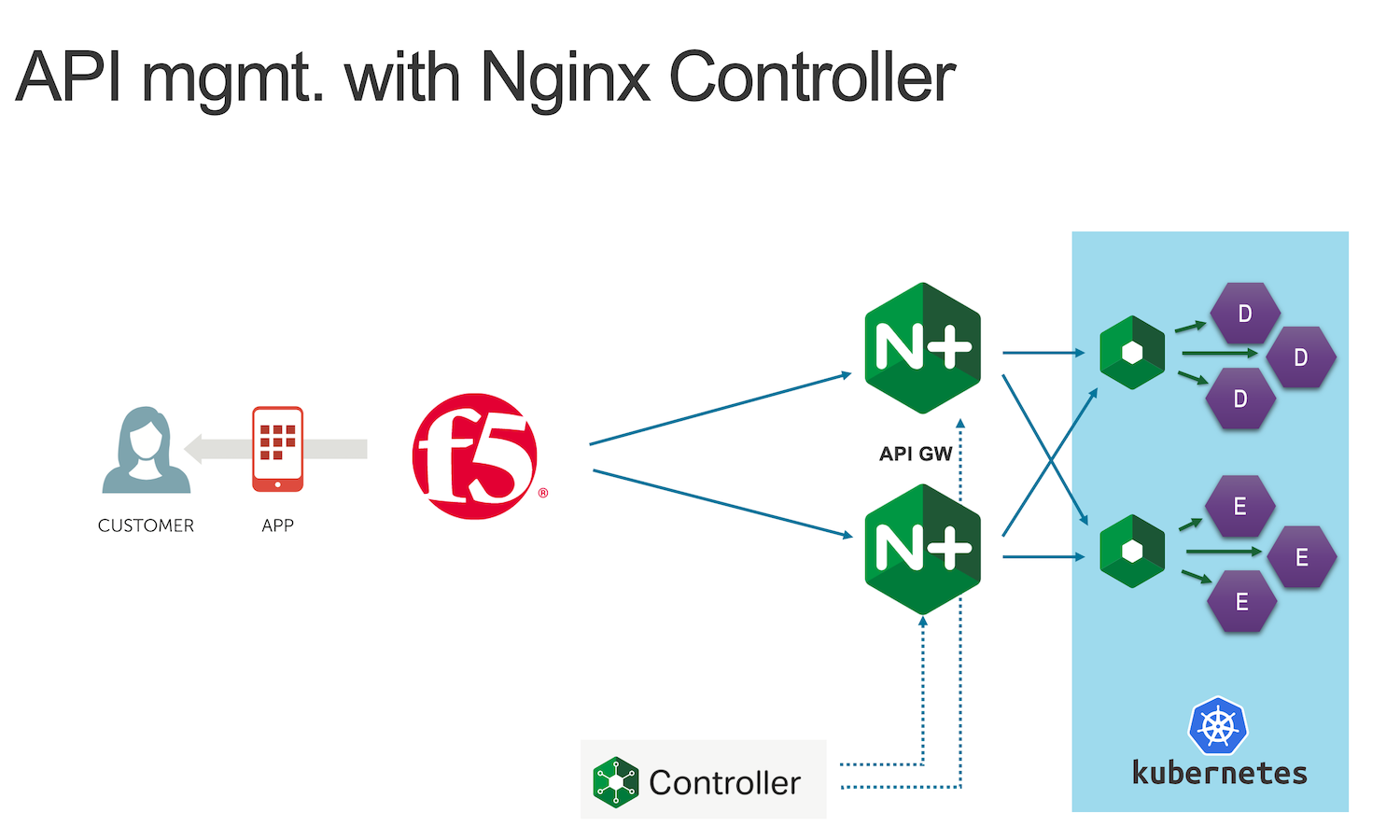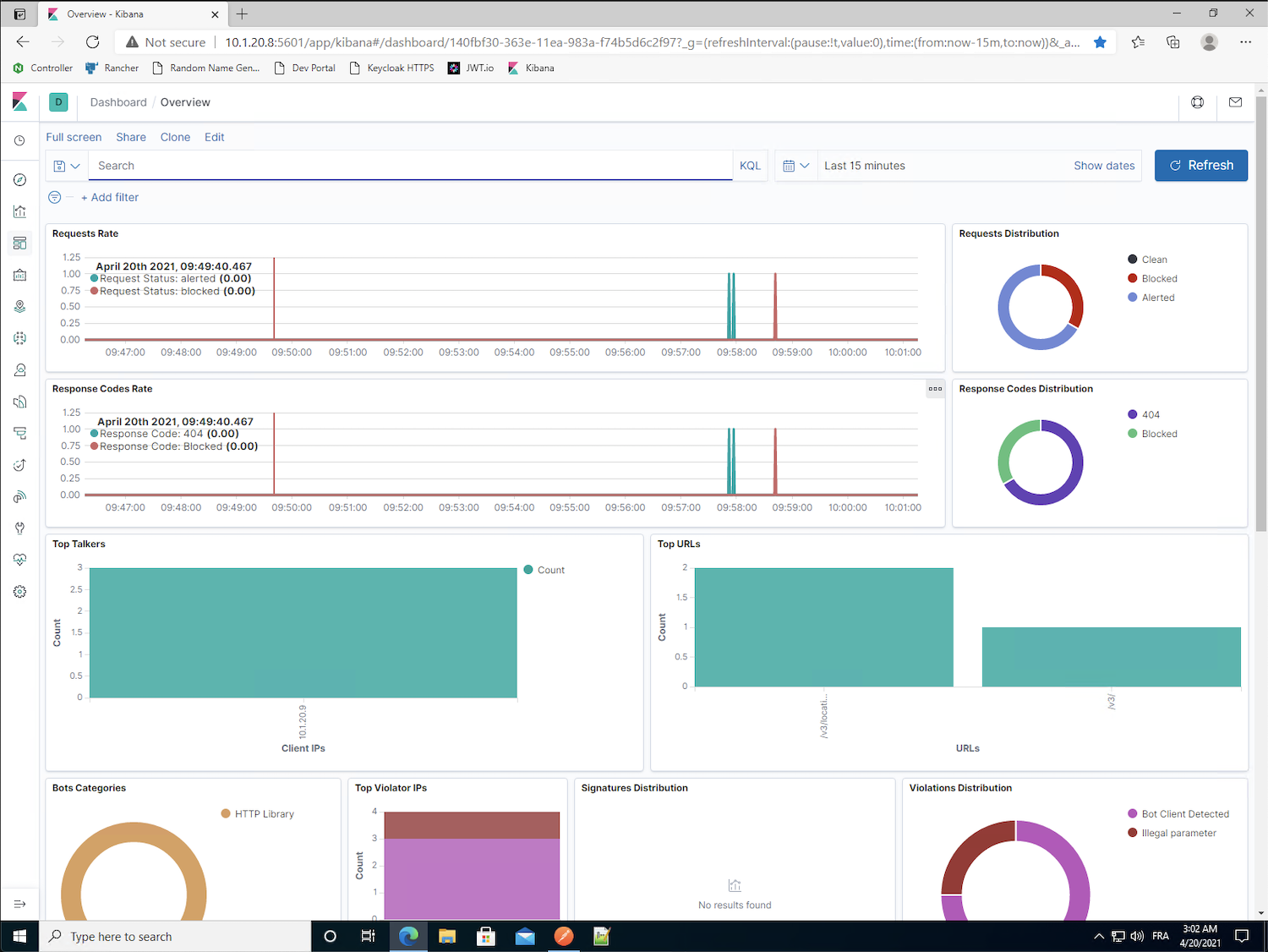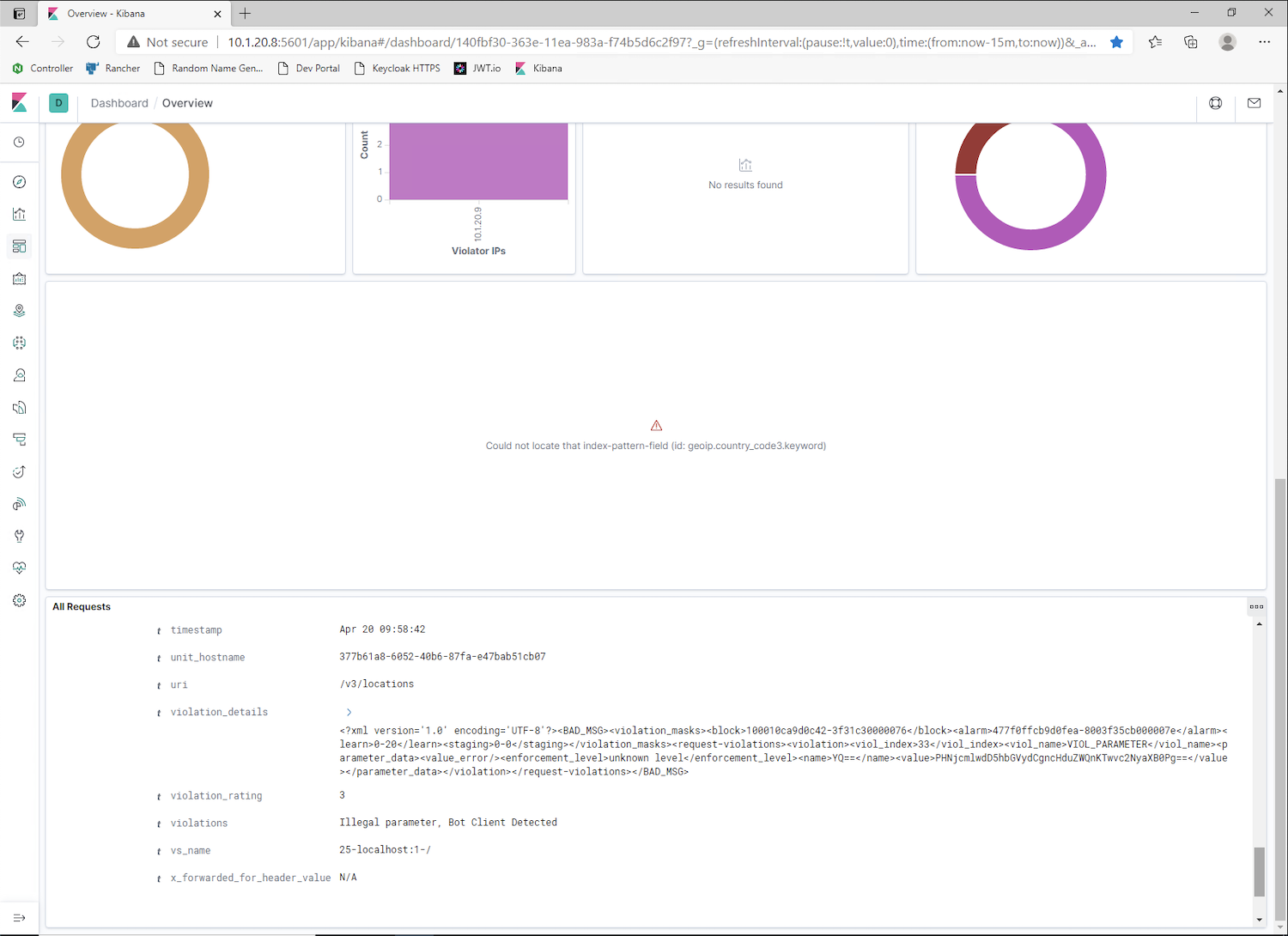NGINX Modern Apps > Class 6 - NGINX API Management > Module 4 - Add security controls Source | Edit on
Step 9 - Set up a web application firewall (WAF)¶
So far in the previous labs, the API Gateway has not been protected. (The API Gateway published through a BIG-IP VM hosting the public IP address and TLS certificates per instance.)
The next step thusly is to protect the API Gateway with a WAF. To do so, we will be deploying NGINX App Protect (NAP) in front of the NGINX Plus API Gateways (managed by NGINX Controller).
Note
We have already deployed NGINX App Protect (NAP) behind the scenes, but it’s not yet enabled.
The current architecture

The future architecture with NGINX App Protect

Note
At the end of this lab we will update the BIG-IP pool member in order to forward the API traffic to NAP instead of the NGINX API Gateways.
Steps to configure NGINX App Protect as an API firewall¶
SSH (or WebSSH) to the
Nginx App ProtectVM.Navigate to the
nginxfolder usingcd /etc/nginx.Check the content of the folder:
Note
You will notice three important files:
- log-default.json <the log config file>
- NginxApiSecurityPolicy.json <the WAF declarative policy file>
- nginx.conf <the nginx config file>
The
log-default.jsonfile is already configured to log all requests (good and bad)Edit the
NginxApiSecurityPolicy.jsonin order to configure the NAP policyNote
It is straight forward to configure NAP policy file when the API developers provide you with an OpenAPI spec file (you can directly refer to the OAS file).
Modify the NAP policy file by adding the OAS file URL:
Note
In VI, in order to edit, type
i(like insert), then make the modifications. When OK, clickESCkey, and type:wqto Write and Quit.{ "policy" : { "name" : "app_protect_api_security_policy", "description" : "NGINX App Protect API Security Policy. The policy is intended to be used with an OpenAPI file", "template": { "name": "POLICY_TEMPLATE_NGINX_BASE" }, "open-api-files" : [ { "link": "https://api.swaggerhub.com/apis/F5EMEASSA/API-Sentence/3.0.1" } ], "enforcer-settings" : { "enforcerStateCookies" : { "secureAttribute" : "always" } },
Now, we have to configure NGINX’s
nginx.confto use this NAP policyNote
We have 2 options here. Either we change the default NAP policy directive from
NginxDefaultPolicy.jsontoapi-sentence.json, or you can comment out theNginxDefaultPolicy.jsondirective and addapi-sentence.jsondirective. In the lab, we will replaceNginxDefaultPolicy.jsonbyapi-sentence.json.user nginx; worker_processes auto; error_log /var/log/nginx/error.log notice; pid /var/run/nginx.pid; load_module modules/ngx_http_app_protect_module.so; events { worker_connections 1024; } http { include /etc/nginx/mime.types; default_type application/octet-stream; sendfile on; keepalive_timeout 65; log_format main '$remote_addr - $remote_user [$time_local] "$request" ' '$status $body_bytes_sent "$http_referer" ' '"$http_user_agent" "$http_x_forwarded_for"'; access_log /var/log/nginx/access.log main; server { listen 80; server_name localhost; proxy_http_version 1.1; app_protect_enable on; app_protect_policy_file "/etc/nginx/api-sentence.json"; app_protect_security_log_enable on; app_protect_security_log "/etc/nginx/log-default.json" syslog:server=10.1.20.8:5144; location / { resolver_timeout 5s; client_max_body_size 0; default_type text/html; proxy_pass http://10.1.20.6$request_uri; } } }
Note
The NGINX configuration forwards logs to 10.1.20.8 (our ELK), and forwards API requests to http://10.1.20.6 (the NGINX API Gateway managed by NGINX Controller)
Reload the NGINX configuration:
Note
Wait till the prompt comes back. It can take up to 10 seconds.
Update the BIG-IP config to route incoming requests to NAP¶
- Login to the BIG-IP TMUI using
adminas both the user and the password. - Select
Local Traffic->Virtual Servers->Virtual Server List-> Edit thevs_apivirtual server. - Click on
Resourcestab -> Selectpool-napas the default pool, instead ofpool-api-gw - Click
Update.
Test your API Firewall¶
RDP to the
Win10VM (user/user).Open
Postmanand theAPI Sentence Generator v3collection.Send any call and check that NAP is forwarding traffic to the API gateway
Now, send an attack using the
GET Locations v3 Attackrequest. The request is blocked and you can see the Violation Support ID (your Violation Support ID will diffear from the one below).Open the
Edge Browserand select theKibanabookmark.By default you should see the NAP dashboard with the relevant violation metrics. At the bottom of the dashboard, you can see the log details. If you want more details, you can extend the
blockedrequest.Warning
In UDF, there is an issue with the Timezone sync. Win10 synchronizes with your local timezone (instead of PST). But ELK uses the PST timezone. Don’t be surprised if the time of the logs does not reflect your local time – you might need to extend the time range in ELK to several hours.


Warning
Congrats! You deployed in few minutes an API firewall using NGINX App Protect in front of your API Gateway infrastructure!